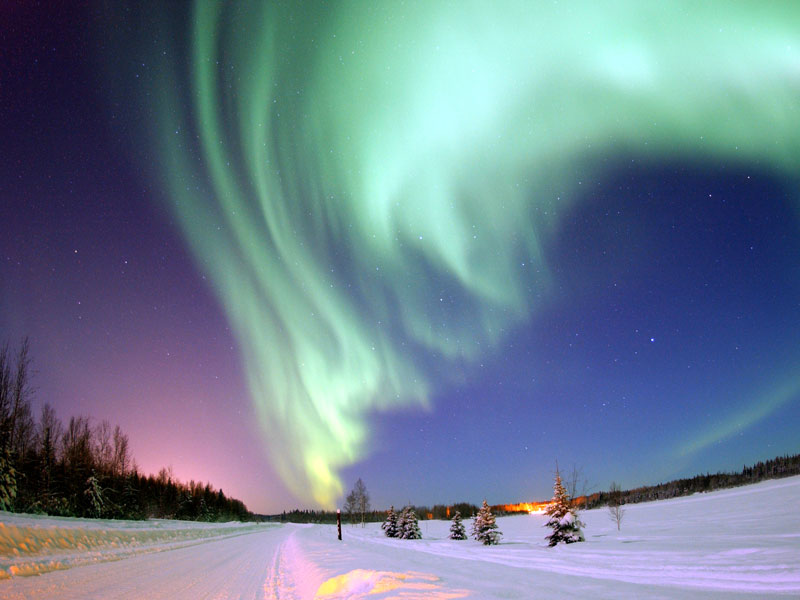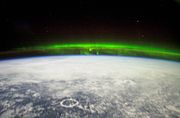Colors of the Aurora
August 15th, 2008 at 4:02 pm (Astronomy)
 Unlike the International Space Station, the aurora remains a sky phenomenon that I have yet to witness with my own eyes. Yet I have read about and seen glorious images of the colored curtains of light, shifting suspended over arctic landscapes. While often yellow or green, some auroras are red or even purple (and some occur in the UV, not a “color” we perceive visually).
Unlike the International Space Station, the aurora remains a sky phenomenon that I have yet to witness with my own eyes. Yet I have read about and seen glorious images of the colored curtains of light, shifting suspended over arctic landscapes. While often yellow or green, some auroras are red or even purple (and some occur in the UV, not a “color” we perceive visually).
What causes the glorious color? What you’re seeing in the aurora is the result of a collision between charged particles streaming out from the sun and bits of the Earth’s upper atmosphere, where the energy resulting from that collision is given off as light. According to a recent Physics Today article titled “How do auroras form?” (by Robert J. Strangeway), the colors indicate the energy of the solar particles prior to collision:
For energies of a few electron volts or so, the aurora is red and emitted at altitudes above 200 km. Particles with energies of about 1 keV penetrate to lower altitudes and are responsible for the dominant yellow-green color of auroras. Even more energetic particles with energies above 10 keV can get to altitudes below 100 km; at such locations auroras are a deep red or purple color.
It makes sense to me that particle energy would correlate with penetration depth, and even with the energy (frequency) of the collision’s resulting radiation, which would dictate the color — although it seems a bit odd that this would not be monotonic (why would both low- and high-energy particles result in low-frequency colors (reds)?). However, wikipedia’s entry on auroras claims instead that the colors indicate what sort of atom or molecule in the atmosphere was on the unlucky receiving end of the collision:
Most aurorae are green and red emission from atomic oxygen. Molecular nitrogen and nitrogen ions produce some low level red and very high blue/violet aurorae. The light blue colors are produced by ionic nitrogen and the neutral nitrogen gives off the red and purple color with the rippled edges. Different gases interacting with the upper atmosphere will produce different colors, caused by the different compounds of oxygen and nitrogen.
So, is it the altitude (dictated by particle energy) or the composition? Probably both! Wikipedia continues:
Auroral electrons created by large geomagnetic storms often seem to have energies below 1 keV, and are stopped higher up, near 200 km. Such low energies excite mainly the red line of oxygen, so that often such auroras are red.
The energy dictates both altitude and which compositional responses you get.
 The aurora has been captured from above (onboard the ISS), too (see left).
The aurora has been captured from above (onboard the ISS), too (see left).